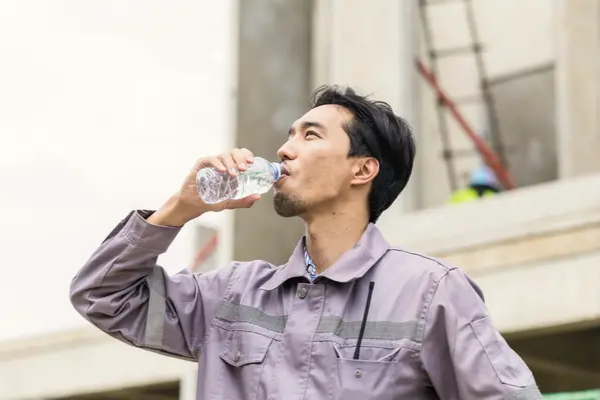Topics
About Diastasis Recti
Diastasis recti, also known as abdominal separation, is a condition that occurs when the two rectus abdominis muscles are separated by an abnormally wide distance. The rectus abdominis muscle is a layer under the skin that works strongly during coughing and lifting.
Also known as the "six-pack", the rectus abdominis is linked in the middle by a fibrous band called the linea alba, which extends from the breastbone to the top of the pelvis.
In diastasis recti, the degree of separation of the two rectus abdominis muscles may differ. The muscles become longer and weaker because of the expanding uterus pushing the muscles apart during pregnancy.
As your baby grows, the muscles and the linea alba stretch and lengthen. The stretching of the linea alba may lead the muscles that support your abdomen to spread further.
Symptoms of Diastasis Recti
Symptoms of diastasis recti include:
- A bulge that is visible in the midline of the abdomen.
- Weakness and difficulty engaging the abdominal muscles.
- Lower back pain.
- Pelvic floor dysfunction, such as incontinence.
Risk Factors of Diastasis Recti
The following risk factors can contribute to the development of diastasis recti:
- Carrying twins or triplets
- Large baby
- Overweight
- Have weak abdominal muscles
- Regularly lift heavy objects
Find Out if I Have Diastasis Recti
Diastasis recti becomes more apparent in the later phases of pregnancy or after delivery.
- The greatest point of separation is at the umbilicus (belly button). It can be seen when you are lying on your back and lifting your head or leg.
- You may notice a gap, a bulge, or a “dome” between your abdominal muscles. You can measure this distance with your fingertips or a tape measure.
- Your back is susceptible to injury with a severe linea alba stretch up to 20 centimetres). Therefore, maintaining correct posture is crucial. A small stretch of 3cm or less typically improves on its own.
Treatment for Diastasis Recti
The treatment for diastasis recti aims to help strengthen the abdominal muscles and improve their function.
- Physiotherapy: These exercises often include gentle and progressive strengthening of the abdominal muscles, focusing on the transverse abdominis and pelvic floor muscles.
- Lifestyle changes: Maintaining a healthy weight, regular exercise, and practising good posture can help avoid excessive strain on the abdominal muscles and prevent diastasis recti from worsening.
- Surgery: This option may be necessary in severe cases of diastasis recti to repair the weakened or separated abdominal muscles, restore abdominal muscle tone, and improve overall core strength.
Preventing Diastasis Recti
It may not always be possible to completely prevent diastasis recti. However, some steps can be taken to minimise the risk and potentially reduce the severity of the condition.
- Exercise regularly: To improve muscle tone.
- Practice good posture: To maintain a neutral spine position and avoid excessive arching or slouching.
- Ensure healthy weight gain during pregnancy: To avoid excessive weight that may strain the abdominal muscles.
- Use proper lifting techniques: To avoid putting excessive strain on the abdominal muscles when lifting heavy objects.
- Gradual return to exercise after childbirth
Best Exercises for Diastasis Recti
Strengthening exercises can be a crucial part of managing diastasis recti. Here are a few recommended exercises that target both the pelvic floor and core muscles to help reduce abdominal separation:
1. Pelvic Floor Exercises
Strengthening the pelvic floor muscles supports the bladder and abdominal muscles, helping reduce symptoms like incontinence and improving core stability.
How to do it:
- Squeeze and lift as if holding in gas or stopping urine flow.
- Practice long squeezes (hold up to 10 seconds, then relax) and short squeezes (quickly squeeze and release).
- Aim for 10 repetitions of each exercise, 3 times daily.
2. Core-Bracing Stomach Exercise
This exercise engages the deeper abdominal muscles, which support the spine and help narrow the waistline.
How to do it:
- Lie on your side with knees slightly bent.
- As you exhale, gently draw in the lower stomach while engaging the pelvic floor muscles.
- Hold for 10 seconds while breathing normally, then release. Repeat up to 10 times.
3. Back Pain Relief Tips
To reduce strain on your back, maintain good posture when sitting, feeding, or lifting. Keep your back straight and bend your knees when lifting or pushing a pram.
These exercises, combined with maintaining good posture and daily routines, can support diastasis recti recovery and overall core strength.
Make an Appointment at Gleneagles Hospitals
Early diagnosis and treatment can help prevent diastasis recti from worsening while improving your abdominal muscle strength.
Get in touch with us to book an appointment with a gynaecologist today, or find out more about the Obstetrics and Gynaecology Services at your nearest Gleneagles Hospital.








